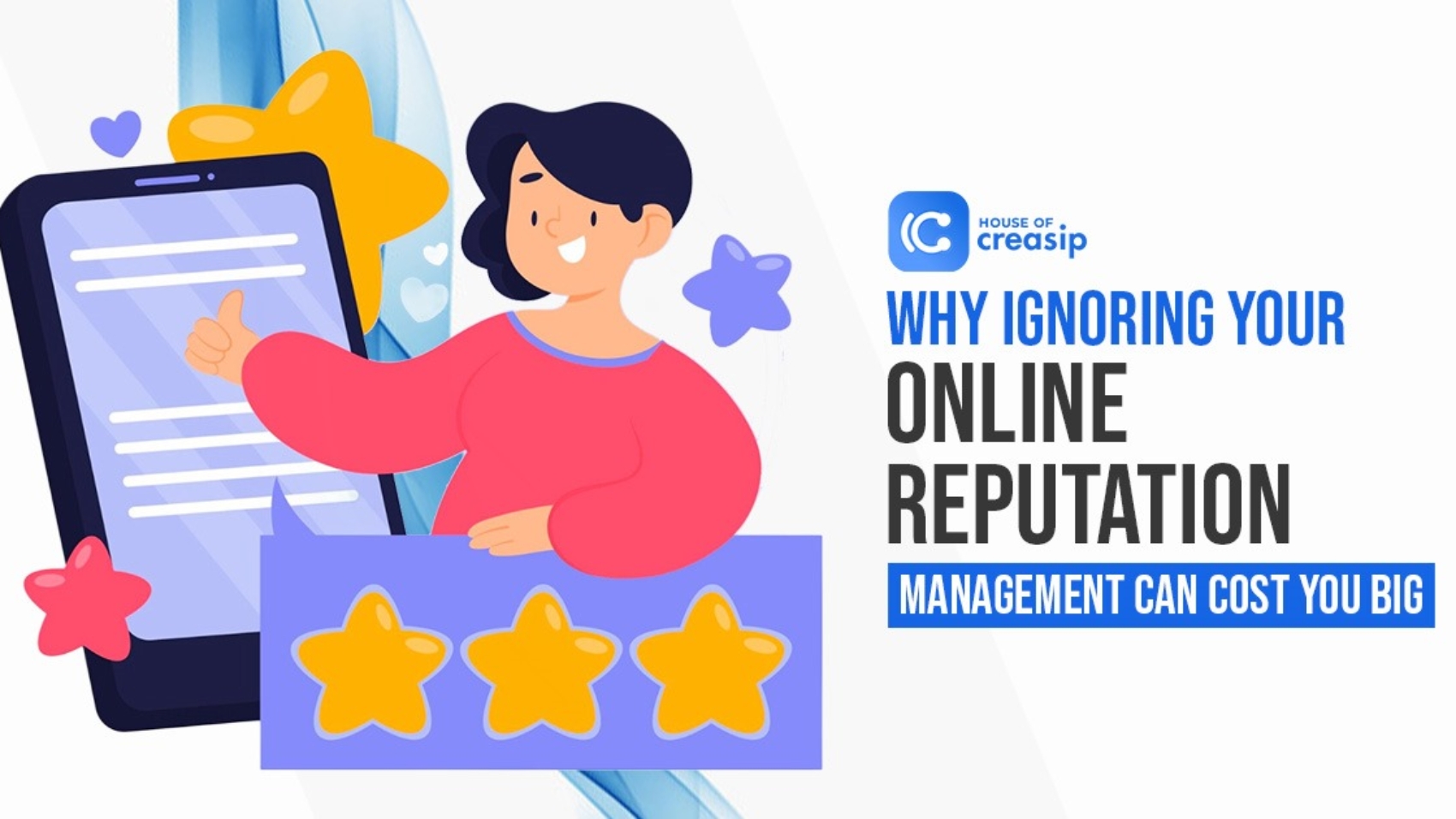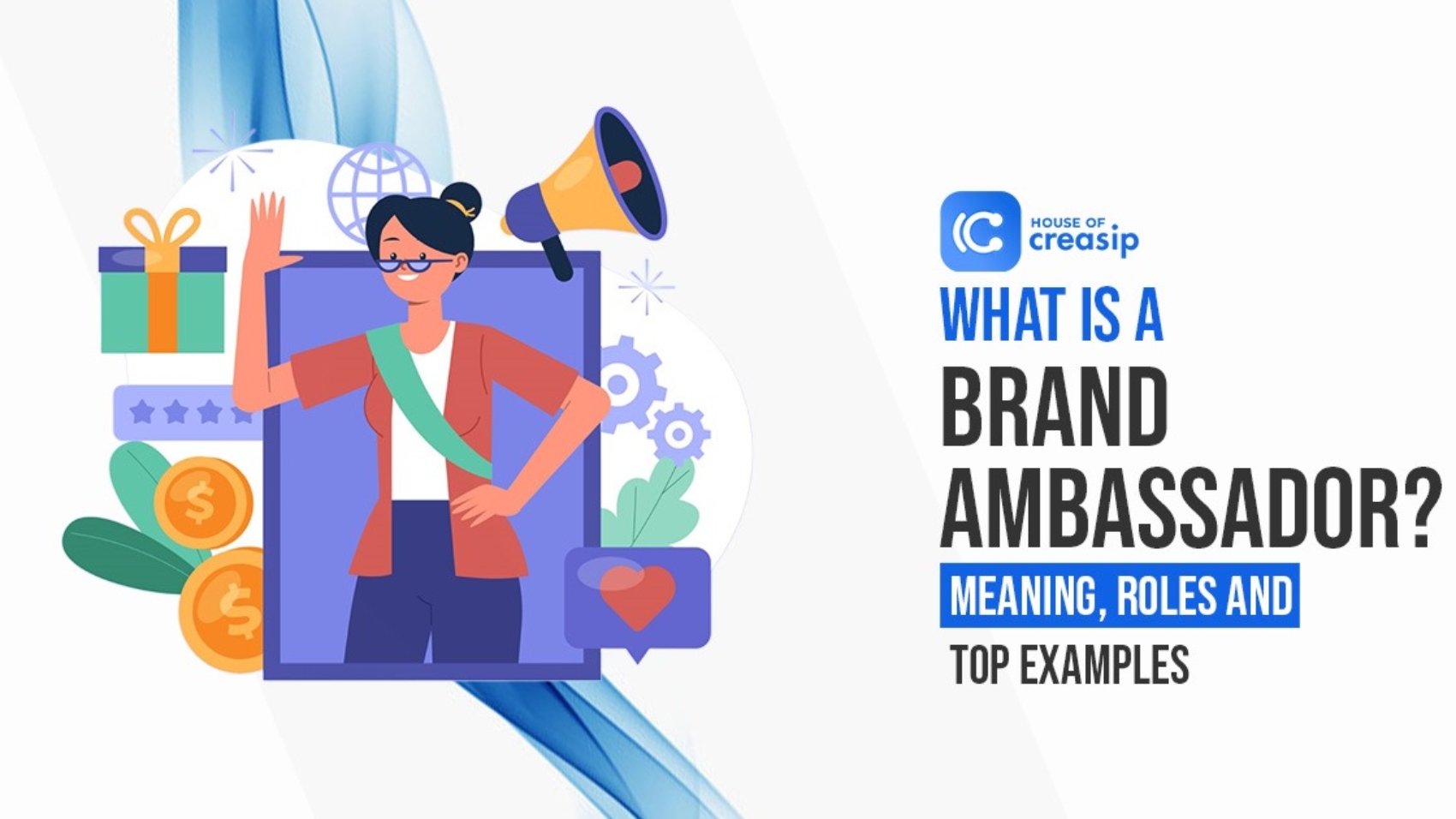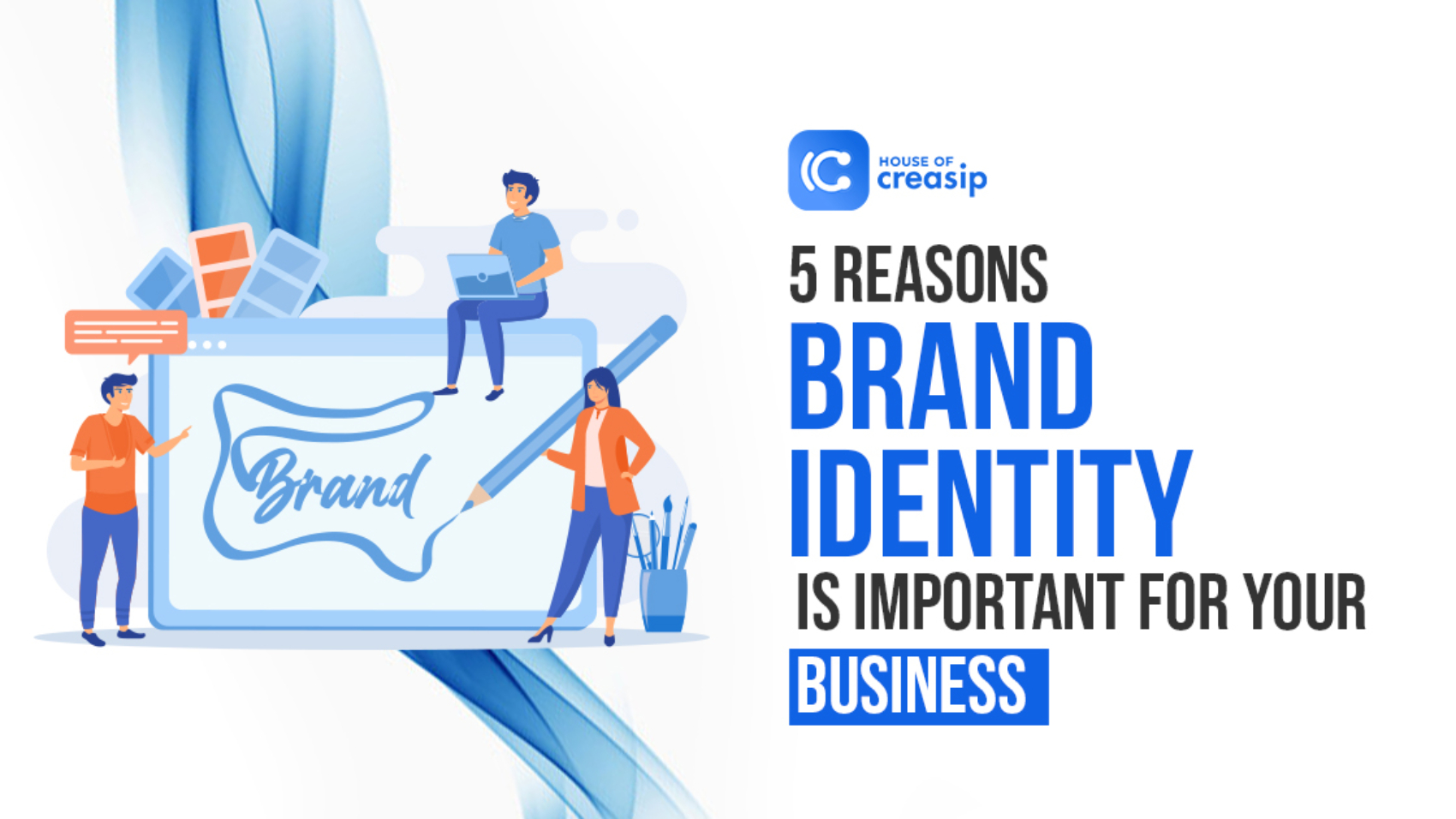Why Ignoring Your Online Reputation Management Can Cost You Big
In today’s digital environment, your online reputation doesn’t solely reflect on your individual character or ethics as a business person; it is an asset that can influence or impact your success. Your online reputation is based on every interaction you have online, from social media posts to reviews, likes, shares or comments; taken together, they shape how everyone sees you or your business.
Whether you are an entrepreneur, freelancer, or someone trying to build a strong online presence, ignoring your online profile can lead to unexpected consequences.
Every individual action taken online has the capacity to shape whether potential clients are willing to engage with you, whether potential partners would be willing to collaborate with you, or whether someone might be positively impressed by you or your organisation. A single negative review, an unprofessional call-out social media post, or outdated online activities can harm an overall image and reputation, reduce trust, and limit opportunities.
In contrast, a well-maintained online presence with effective credibility-building trust signals can create new engagement possibilities with new clients, partners and even new opportunities in your career.
House of Creasip, India’s largest influencer marketing agency, presents a discussion on the importance of online reputation, the associated costs, common mistakes leading to reputation loss, and practical strategies for enhancing and protecting online credibility in today’s digital landscape.
What is Online Reputation?
Your online reputation is how people see you or your brand based on your digital presence. This includes social media profiles, reviews, website content, blog posts, comments, mentions, and any other digital traces connected to you or your business. Essentially, it’s the total of everything about you online and how it influences others’ opinions.
A strong online reputation can be a valuable asset. It boosts your credibility, improves your image and builds trust with your audience or potential clients. Positive reviews, helpful content and engaging social interactions help create a good reputation, attracting opportunities, partnerships, and loyal followers.
On the other hand, a neglected or negative online reputation can lead to serious consequences. Outdated information, unresolved complaints, or harmful comments can hurt your credibility. This can drive away potential customers and even affect your career or business growth. In today’s digital world, where information spreads quickly, managing your online reputation is essential for long-term success.
Why Online Reputation Matters More Than Ever
1. First Impressions Are Made Online in 2025
In the digital age, most people form opinions about you without meeting you in person. Your online profile is usually the first point of contact. Potential clients, employers, or partners are likely to Google you before any interaction.
Suppose a client searches for your services and finds outdated, negative reviews or unprofessional social media activity. That initial impression can overshadow years of hard work. If you ignore your online reputation, you leave first impressions to chance and often the results are not favourable.
2. A Direct Impact on Business Success
For businesses, your online reputation closely relates to revenue. A negative review, a viral complaint, or poor customer feedback can cause a direct loss in sales. Studies show that more than 90% of consumers read online reviews before making a purchase, and many shy away from businesses with poor reputations.
The cost of managing your online reputation can be staggering. You not only risk losing current clients, but attracting new ones can become a struggle. This makes effective online reputation management a financial necessity.
3. The Power of Word of Mouth Amplified
In the past, word of mouth stayed local. Today, one negative comment can spread globally within minutes. This amplifies the risk of neglecting online reputation management. Social media platforms, review sites, and forums allow everyone to see and share their experiences, making your online reputation a public matter.
Common Online Reputation-Losing Mistakes
Many individuals and businesses underestimate the risks linked to a poor online reputation. Here are some mistakes that can be costly:
Neglecting Social Media Profiles
Leaving your social media accounts inactive or unmanaged can hurt your image. Outdated information or a lack of engagement may come across as unprofessional.
Ignoring Negative Reviews
Responding to reviews, both positive and negative, is crucial. Ignoring complaints can worsen the situation, while addressing them professionally shows you care and builds credibility.
Inconsistent Messaging Across Platforms
Mixed messages from your online profile can confuse your audience and weaken your brand identity. Consistency is vital for a strong online presence.
Lack of Monitoring
Failing to track mentions, reviews, or comments about you online can result in missed opportunities for management.
Overlooking SEO for Reputation
If you don’t optimise your content, negative information can appear higher in search results. Effective management involves leveraging SEO to showcase the positive aspects of your profile.
The cost of losing online reputation because of these mistakes is significant. It can lead to lost revenue and damaged trust that can take years to restore.
How Neglecting Online Reputation Affects Individuals
While businesses often feel the effects of a poor online reputation more directly, individuals are not exempt. In today’s competitive job market, your online presence significantly shapes how recruiters, potential employers, and even clients view you. Most employers now regularly check social media profiles, professional networking accounts, and other digital traces before making hiring choices.
Consider this scenario: you’re a candidate for your dream job, but during the hiring process, a few years-old inappropriate posts, controversial comments, or negative mentions surface. No matter how strong your qualifications or experience are, these can overshadow your professional accomplishments and raise doubts about your character or judgment.
Ignoring your online profile can also impact networking opportunities, freelance work, and personal branding. Maintaining a consistent and positive online image is crucial for protecting your reputation, building trust, and ensuring your digital presence supports your career goals rather than hindering them.
The Financial Impact: Understanding the Cost
The cost of online reputation is tangible and measurable. For businesses, negative reviews and poor social media engagement can lead to lost customers and lower sales.
Here’s a breakdown of possible costs:
1. Lost revenue: Research indicates that businesses with poor online reviews can lose up to 22% of potential revenue.
2. Marketing expenses: Fixing a damaged reputation often requires more investment in PR campaigns and management services.
3. Opportunity cost: Each missed partnership or client due to a tarnished online image is a lost chance that might never return.
In summary, the cost of losing your online reputation is much greater than the investment needed for proactive management.
Strategies for Effective Online Reputation Management
Effective online reputation management goes beyond reacting to problems—it involves actively building an authentic online presence. Here’s how you can do it:
1. Monitor Your Online Mentions
Regularly check for mentions of your name or brand. Tools like Google Alerts, Mention, or Brand24 can help you stay informed. This way, you can quickly address negative feedback and maintain a positive image.
2. Respond to Reviews and Feedback
Engaging with your audience is key, especially when they leave negative reviews. Turning a potential PR issue into an opportunity is possible by responding professionally, apologizing if needed, and showing dedication to resolving concerns. This builds your credibility.
3. Maintain Consistent Profiles
Having consistency in profile pictures, bios, and messaging across platforms helps strengthen your online standing. Your profile should clearly reflect your values and professional identity.
4. Highlight Positive Content
Promote positive content. Share achievements, customer testimonials, and expert articles to boost your online presence and counteract any negative mentions.
5. Invest in Professional ORM Services
If managing your business’s online reputation feels overwhelming, consider professional services. The cost of managing your online reputation is much lower than the potential financial and reputational losses from ignoring issues.
6. Educate Your Team
For businesses, every employee represents your brand online. Training your team to handle social media responsibly and professionally helps avoid reputation-destroying mistakes.
Real-Life Consequences of Ignoring Online Reputation
To understand the impact, consider these real-life examples:
1. Businesses losing clients: Many small businesses experience a drop in sales after negative reviews go unaddressed. Without proactive management, their online standing suffers.
2. Individuals losing jobs: Job candidates have lost offers due to unprofessional content on social media. A neglected online profile can haunt you long after the posts are made.
3. Brands facing PR crises: Major corporations have lost billions in market value due to viral backlash on social media. The costs associated with losing online reputation in such situations can be immense.
These examples show why ignoring your online reputation is never a good choice.
The Long-Term Benefits of a Strong Online Reputation
Investing in your online reputation provides long-term benefits:
1. Enhanced trust: A strong online presence builds trust with clients, partners and employers.
2. Higher revenue: Businesses with positive reputations attract more clients and keep their current ones.
3. Career growth: Professionals with credible online profiles enjoy better job opportunities and networking advantages.
4. Competitive advantage: A well-managed online image sets you apart from competitors.
In brief, the benefits far outweigh the effort and cost of effective online reputation management.
Conclusion
Your online reputation is one of your most valuable assets, whether it’s for you or your business. Ignoring it can lead to lost opportunities, lower revenue and damaged credibility. Many people underestimate the cost of managing their online reputation, but it can have a significant impact on career growth, client trust, and their overall online standing.
From understanding the cost of online reputation management to recognising common mistakes that can harm your reputation, the message is clear: proactive, strategic and consistent management is essential. By monitoring mentions, engaging with your audience, maintaining a consistent online profile, and investing in reputation management when needed, you can protect your online image and ensure your online presence works for you.
Creating and managing a positive online reputation for your own business or personal credibility is a long-term investment; nevertheless, it will build trust and loyalty from your community and clients, attract new business opportunities and engage in interesting conversations.
Partner with House of Creasip, India’s largest influencer marketing agency, as we focus on enhancing your online presence and protecting your digital reputation. Your online reputation should come first if you want to make your brand or business successful.
Start managing your reputation today!
FAQ:
Q1. What is online reputation management?
Online reputation management (ORM) is a practice that handles what people say about your product, brand or company. In simple words, it controls how your brand or personal image looks online. ORM takes benefit of comments and impressions to create more interest and trust with the public.
Q2. How should you manage your online reputation?
You can manage your online reputation by monitoring daily mentions, responding to reviews and complaints as soon as possible. ORM includes regularly sharing positive, insightful content on your website and social media to build trust among viewers. To manage your online reputation management, use tools such as Google Alerts and engage authentically to ensure consistency, transparency and credibility.
Q3. Is online reputation management only for big companies?
No. Anyone from small businesses, startups and even individuals can benefit from ORM. In fact, small businesses are the ones who seem more vulnerable because one negative review can make it heavily impact on local trust.
Q4. Can ignoring ORM affect SEO and online visibility?
Yes. Negative news, bad reviews, or harmful content can rank higher in Google searches, pushing down positive brand mentions and making it harder for people to find you, which will result in lowering your visibility.
Q5. How fast can a reputation crisis spread online?
Through social media and search engines, news spreads immediately. A single post or tweet can destroy years of brand building in a matter of minutes, if it’s not managed properly.



